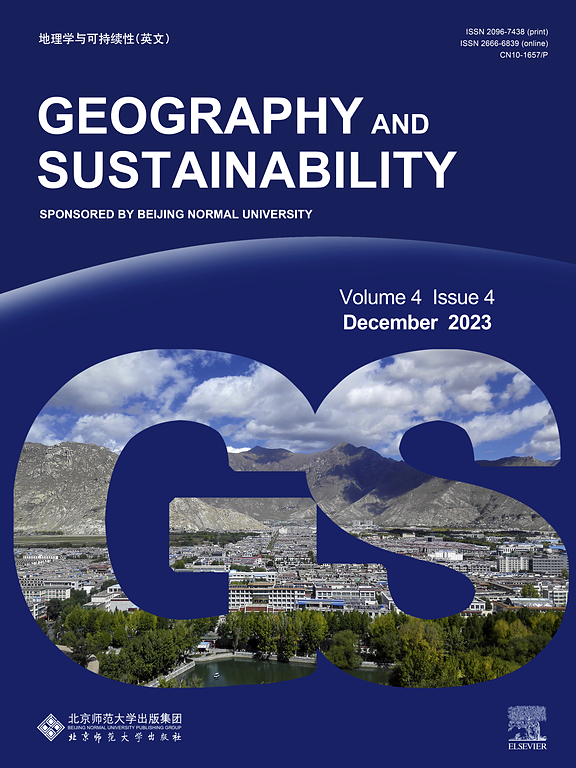Global meta-analysis reveals different grazing management strategies change greenhouse gas emissions and global warming potential in grasslands
IF 8
1区 环境科学与生态学
Q1 GEOGRAPHY, PHYSICAL
引用次数: 0
Abstract
Grazing management significantly influences greenhouse gas (GHG) emissions and the global warming potential (GWP) in grasslands. Yet, a limited understanding of the impact of grazing and grazing exclusion on GHG emissions and GWP in grasslands hinders progress towards grassland ecosystem sustainability and GHG mitigation. We conducted a global meta-analysis of 75 published studies to investigate the effects of grazing and grazing exclusion on methane (CH4), carbon dioxide (CO2), nitrous oxide (N2O), and GWP. Our results revealed that grazing and grazing exclusion significantly increased the CO2 and CH4 emissions, respectively. The responses of GHG emissions and GWP to grazing were regulated by grazing intensity and elevation. We also found that light grazing significantly decreased GWP but heavy grazing increased GWP. Reducing grazing intensity was a simple and effective method through stocking rate adjustment, which promised a large GHG mitigation potential. Our results demonstrated that GHG emissions increased with elevation under grassland grazing, implying that irrational grazing in high-elevation grasslands promoted GHG emissions. In comparison with grazing, only long-term grazing exclusion reduced the GWP, and CH4 emissions enhanced with grazing exclusion duration. However, long-term grazing exclusion may shift economic demand and grazing burden to other areas. Overall, we suggested that regulating the grazing intensity, rather than grazing exclusion, was an effective way to reduce GHG emissions. Our study contributed to the enhancement of sustainable grazing management practices for GHG balance and GWP in global grasslands, and offered a global picture for understanding the changes in GHG emissions and GWP under different grazing management regimes.

求助全文
约1分钟内获得全文
求助全文
来源期刊

Geography and Sustainability
Social Sciences-Geography, Planning and Development
CiteScore
16.70
自引率
3.10%
发文量
32
审稿时长
41 days
期刊介绍:
Geography and Sustainability serves as a central hub for interdisciplinary research and education aimed at promoting sustainable development from an integrated geography perspective. By bridging natural and human sciences, the journal fosters broader analysis and innovative thinking on global and regional sustainability issues.
Geography and Sustainability welcomes original, high-quality research articles, review articles, short communications, technical comments, perspective articles and editorials on the following themes:
Geographical Processes: Interactions with and between water, soil, atmosphere and the biosphere and their spatio-temporal variations;
Human-Environmental Systems: Interactions between humans and the environment, resilience of socio-ecological systems and vulnerability;
Ecosystem Services and Human Wellbeing: Ecosystem structure, processes, services and their linkages with human wellbeing;
Sustainable Development: Theory, practice and critical challenges in sustainable development.
 求助内容:
求助内容: 应助结果提醒方式:
应助结果提醒方式:


